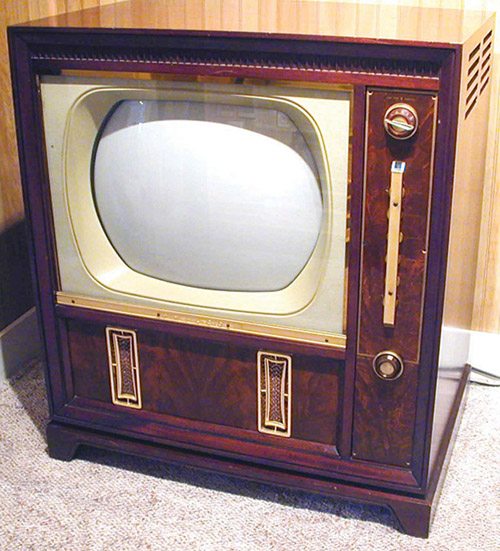The saga of television reads like a thriller. No Eureka moment, no single scientist, no Nobel prize. But there was snooping, spying and court room drama
Krishna Murty Kommajosyula
When Logie Baird took his television machine to the Daily Express, he was promptly sent away. As Baird walked out, the editor called up his aide and told him, “Go down to reception and get rid of a lunatic who’s down there. He says he’s got a machine for seeing by wireless! Be careful! He may have a razor on him!”
Zworykin went to the White House to meet Jerome Wiesner, former president of MIT and then scientific advisor to American president J.F. Kennedy. Wiesner introduced him to JFK as “This is the man who got you elected.”
”How’s that?,” asked JFK.
”This is the man who invented television,” replied Wiesner.
It was in that moment JFK realised the importance of television in the elections, and then Zworykin cracked, “Have you seen television recently?”

A 14-year-old farm boy showed complicated sketches and equations written across the blackboard to his chemistry teacher, Justin Tolman, on March 1922. The boy thought that his teacher was the only person who could understand it. Perplexed at the non-chemistry lines, the teacher asked the boy, “What has this to do with Chemistry?”
The boy answered, “This is my idea for electronic television.”
His teacher was startled and asked, “Television? What’s that?”
The sketch was a rudiment of electronic scanning of a picture.
Television! This is the story of its inventors, their troubles and turmoils. The saga of television reads like a thriller. No Eureka moment, no single scientist, no Nobel prize. It evolved over decades through firm thinking, failures, frustration and, of course, success from a number of forgotten scientists. There were no big laboratories or big money as back up but there was snooping, spying and court room drama.
The press at that time was sceptical and the public unimaginative. Those ideas were far-fetched at that time and only a handful of men could have understood a television system, let alone an electronic one.
The TV saga

In 1881, Constantin Senlecq came up with the idea to transmit pictures by converting them into a stream of electrical pulses.
In 1884, Paul Nipkow, a young German scientist, proposed a metal disk with a series of holes in the shape of a spiral. As the disk rotated between the subject and light, the image was broken down to a number of lines of varying intensity. Photoelectric cells converted them into electrical signals to be sent to a receiver. The receiving disk which rotated synchronously reproduced the picture. Nipkow called it the ‘image rasteriser,’ which scanned 24 lines per picture with 10 frames per second. However, “the sensitivity was not enough and the selenium cell was very laggy.” Amplifiers were yet to arrive.
Two breakthrough principles of visual transmission were behind these ideas. The first was discovery of the photoelectric effect on selenium bars by Joseph May, a telegraph operator, and Willoughby Smith, an English electrical engineer, in 1873. The second was the theory of persistence of vision which explains how the brain continues to ‘see’ an image for a split second after it is gone—a kind of a memory effect of about 1/16th of a second. So a series of separate but continuous images are perceived as a single moving picture.
During the 1870s, Sir William Crookes created a vacuum tube called ‘The Crookes Tube,’ which produced a beam of electrons. By 1897, Ferdinand Braun fixed magnets outside the tube and deflected the electron beam, thereby the spot of light. This was the forerunner of the oscilloscope and the picture tube.
On 18th October, 1906, Arthur Korn transmitted a still photograph of Prince William over a distance of 1800 km using selenium photocells. In Paris, Georges Rignoux and A. Fournier transmitted still silhouette images using a rotating mirror-drum scanner with a matrix of 64 selenium cells in 1909. Later in 1911, Cambell Swinton suggested the use of CRT in the television system. But in Russia, Boris Rosing and his student Vladimir Zworykin were trying to transmit simple geometric shapes with a mechanical mirror-drum scanner to a ‘Braun tube’ or ‘CRT.’ Zworykin described them as ‘very crude images.’










